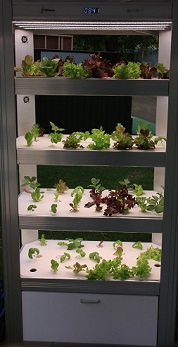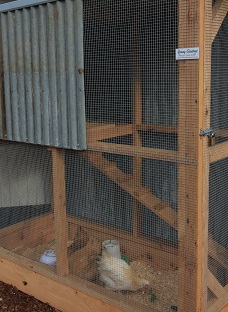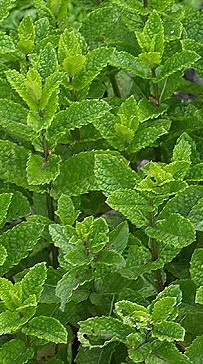Start an Urban Farm
Learn how to grow your own produce in the heart of the city with this urban farming course.
Farming is viable on a small property if you:
- Growing the right kind of crops
- Use proper techniques for small spaces
- Get creative with your container and land use
Urban areas may not be appropriate for producing wheat, rice or for farming large animals; but many crops can be grown on small plots and still be economically viable.Farming in urban areas has one major advantage — produce does not need to be transported so far, which reduces carbon emissions and improves freshness.
Course Duration: 900 hours
Course Structure
The Advanced Certificate in Urban Farming comprises 9 modules (5 compulsory modules and 4 electives that students select from the electives list).
Compulsory Modules
Elective Modules
Select four electives from the list below:
Enrol Today
Ready to get started? Click on the orange enrol now button.
Have questions? Click here to email our course counsellors.
How is Urban Farming Different to Traditional Farming?

- Land is generally more costly in an urban area
- Planning laws may restrict where you can farm, and the type of crops you can grow
- Climatic conditions may be different (e.g. lots of buildings and pavement can create a heat bank making urban areas hotter)
One solution for making more use out of limited space may be to farm vertically rather than horizontally.
Consider Plants for Vertical Farms
Vertical growing for crop production can be utilised on a small or large scale. It is an excellent choice for many home gardeners, urban community gardens, and balcony gardens. It saves space and the output per metre is far greater than in-ground grown crops (no paths or spaces between rows to take up space). Vertical gardens are also more accessible to people as you can stand to tend them – lower green walls could be utilised for wheelchair access.
When it comes to choosing crop plants for vertical growing systems there is a vast amount of choice given that the interior environment can be controlled. Vertical crop production systems can, of course, also be situated outside and could be useful as urban food banks, commercial fruit production, or on a small scale for the domestic vegetable or herb garden and also for restaurants and cafes.
Crops Which May Suit Vertical Growing:
- Slumping edibles: strawberries, lettuce; grow low enough to crop on layered shelves
- Mushrooms
- Edible climbers: grape, Chinese gooseberry
- Trellis grown vegetables: cucumber, cucurbits, tomatoes and cherry tomatoes, beans, peas etc.
- Low herbs: thyme, marjoram, chives, parsley, tarragon, coriander, chili, basil, dill, parsley and mints even nasturtiums
- Espaliered fruit trees – peach, pear, plum, apple, citrus, olive, fig, apricot
- Cut Flowers
- Medicinal herbs
 Animals that May Suit Urban Farming
Animals that May Suit Urban Farming
- Poultry: some types of poultry can be farmed ethically for eggs and meat in relatively small areas, in accordance with local law.
- Dairy: urban farming may be viable for dairy sheep or goats, particularly if the produce is value added by converting to yoghurt or cheese.
- Fish and crustaceans: can be farmed profitably in relatively small areas alone or as part of an aquaponics system.
- Worms, snails, bees and other invertebrates: can be farmed in small spaces.
Herbs
Less suited are taller shrubby plants that may take up more horizontal space as they grow out, such as larger varieties of sage, capsicum, and upright rosemary. Of course, these may be used provided that they are pruned routinely to prevent that horizontal growth. Smaller, dwarf or more compact varieties are also now available for most herbs. Plants such as prostrate rosemary could be planted at the top of the wall where they can spill down but are also easily clipped to make sure they stay within their allotted space. Plants that require a bit of protection from full sun and also require more moisture could be planted at the bottom e.g. mints, parsley, coriander etc.
A green wall for edible plant growing can be as simple as a series of pots/pockets mounted on a frame – this is a cheap and easy way to create a green wall. The downside to such a system is that the potting medium does dry out quite quickly it is nest to always use a top quality potting mix. Unless you use an automated simple irrigation system (drippers for example) you may be hand-watering a system such as this several times a day in warm to hot weather. Nutrients also leach out quite quickly as the pots/pockets are reasonably small. Media also becomes hydrophobic in this situation if the garden isn’t constantly monitored for moisture.
Herbs are usually harvested quite often – this has the beneficial effect of also keeping them compact. Herbs such as parsley are biennial and it is best not to let these go to seed because they become large and unruly plants with huge root system, given their way. Replace these annually – placing these sorts of annual and biennial plants (parsley, coriander, dill and so on near the lower part of the wall, means they are easy removed once spent (before they start to flower or just as the first buds appear) and also easily replaced.
Of course, just as there is for ornamentals, there are many systems that could be used for herb, vegetable and fruit growing on a vertical garden or a grow wall, ranging from the simple one just described, through to hydroponic systems and fully automated crop production systems large or small. Alternatively a vertical herb or vegetable garden may also utilise a fence, wall, trellis or lattice system. Examples of the way we have used vertical space to accommodate edible plants goes back many years e.g. passionfruit on trellis, grapes on pergolas and trellis, espaliered fruit trees on fences or against walls climbing frames for beans, peas and other creeping plants. Now we also have a range of sophisticated systems at our disposal.

Vegetables
Many vegetables need full sun to grow and produce well, so if possible you need a sunny position for a vertical vegetable garden unless you are able to provide space inside a protected structure such as a greenhouse with automated lighting systems etc. such as those used in commercial applications.
However there are always some plants that will grow in shade, semi-shade and full sun outdoors:
- Mints, Thai basil, sorrel, watercress, will grow in full shade
- Lettuce, silver-beet (chard) rocket, chives, spinach and parsley will grow in semi-shade
- Tomatoes prefer full sun and silver-beet (chard), chives, spring onions will all grow in full sun
Fruiting Plants
Strawberries are an obvious choice – they do not take up a lot of room and are easily grown on a wall, in a basket or in pots. They require full sun.
Pleached or espaliered fruiting trees – most varieties of fruiting trees are suitable. Some fruiting trees are also suited to training against a wall rather than on a fence.
Fruiting vines such as passionfruit, kiwifruit, grapes are all suited to green walls or on trellis or lattice.
Trailing vines
Trailing vines are very suited to growing vertically – plants include: cucumbers, melons, butternut squash, pumpkin, sweet potatoes these too need full sun.
Other Vegetables to Try
It may not be an obvious choice but any plants in the cabbage family are well worth trying. Situate them so that they can be easily accessed. In a vertical garden the lower portions would be good as then you could easily reach them for pest control and also net them, if needed, against cabbage moths; snails and slugs and not as likely to attack plants growing in a vertical garden. These are best suited to pot or larger container growing within the system:
- Miniature cabbages
- Broccoli or sprouting broccoli
- Small cauliflower varieties
- Kale
Microgreens are another possibility especially in a hydroponic system – mustard greens, beet tops etc.
Almost any smaller vegetable will grow in a green wall given the right cultivar choice and adequate space, care, water and nutrition. Vegetables such as carrots (smaller varieties, radishes, beets (mini beets are an great choice) onions, shallots, garlic and leeks are all worth trying.
Cut Flowers
People who live in the suburbs and cities are a prime market for cut flowers. Many in demand types of flowers will take up relatively little space, but they do require a lot of attention to produce a high quality product. Very profitable flower farms can be quite viable on a small suburban property if you know what you are doing, and do it the right way.